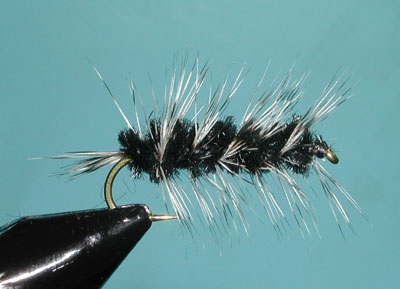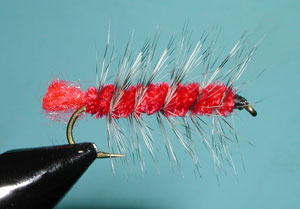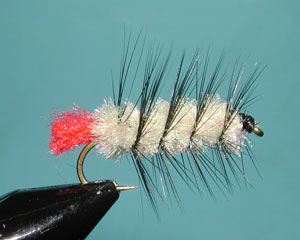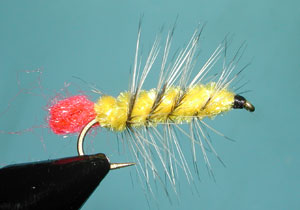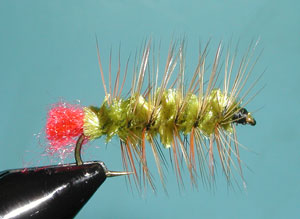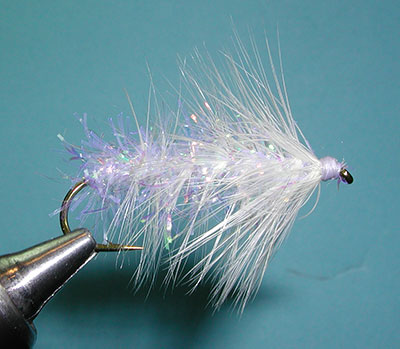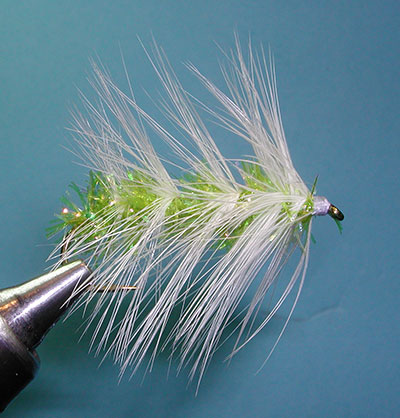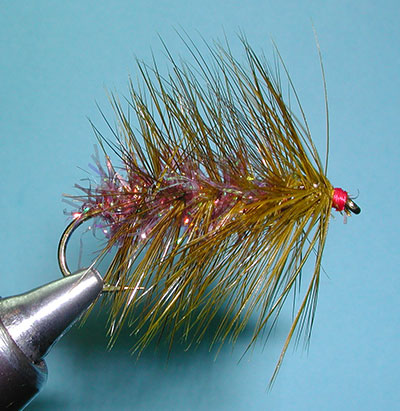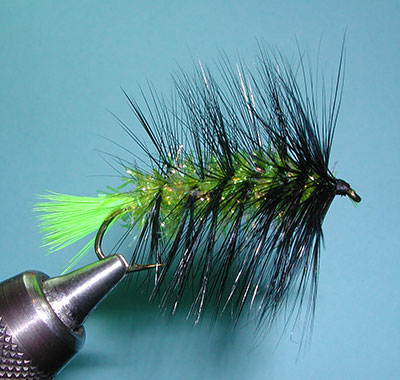Notes: 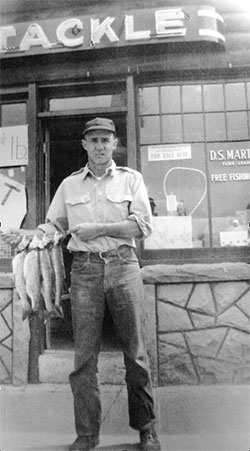 The Woolly Worm utilizes a palmered hackle along the entire hook shank which has been documented as early as the 1500's during Napolean's time. According to A.J. McClane (The Practical Fly Fisherman, 1975), Izaak Walton described the fly in "The Compleat Angler' (1653) as a simulation of a catepillar known as the Woolly Bear. One variation, the Palmer Fly, was shown on the cover of R. Brookes book, "The Art of Angling" (1770). Sometime in the 1920's, this pattern was introduced into the United States from England and was used as a Smallmouth Bass Fly in the Ozarks of Missouri and Arkansas. Don Martinez, a West Yellowstone Fly Shop owner from California, received this pattern from a friend in Arkansas sometime in the late 1930's and created variations that he called "Woolly Worms". Don Martinez is generally regarded as the individual who developed the modern day Woolly Worm for trout fishing. In the 1940, he wrote to Preston Jennings notes on the Woolly Worm: The Woolly Worm utilizes a palmered hackle along the entire hook shank which has been documented as early as the 1500's during Napolean's time. According to A.J. McClane (The Practical Fly Fisherman, 1975), Izaak Walton described the fly in "The Compleat Angler' (1653) as a simulation of a catepillar known as the Woolly Bear. One variation, the Palmer Fly, was shown on the cover of R. Brookes book, "The Art of Angling" (1770). Sometime in the 1920's, this pattern was introduced into the United States from England and was used as a Smallmouth Bass Fly in the Ozarks of Missouri and Arkansas. Don Martinez, a West Yellowstone Fly Shop owner from California, received this pattern from a friend in Arkansas sometime in the late 1930's and created variations that he called "Woolly Worms". Don Martinez is generally regarded as the individual who developed the modern day Woolly Worm for trout fishing. In the 1940, he wrote to Preston Jennings notes on the Woolly Worm:
"This horrible looking grub, Woolly Worm, is a made over bass and crappie fly. Properly fished it is murderous all season long. I made
and sold as many of these things as all other flies combined last summer. I hate the looks of them and consider them more a lure than a fly, but they have had a boom for the two seasons last past with no
sign of a let up. They should be used only in still or very slow water, fished deep, with a twitching of the line by the left hand. The movement
of the hackle is what gets, em, suggesting perhaps the waving breathing apparatus of the may-fly nymphs and others."
The original woolly worm designed by Martinez had a black chenille body with a Grizzly hackle wound along the body and a Grizzly hackle tip for a tail. Martinez attached the hackle at the bend of the hook by the butt and wound it forward with the dull or concave side facing the hook eye. By pointing the fibers forward, the hackle would undulate during the retrieve. Rather then using red hackles for the tail, many woolly worms today use a red wool yarn tag. During the 1950's this fly was used throughout the west as an imitation of giant stones, dragon flys, crane flies, etc. His Woolly Worm patterns evenutally became the inspiration of the Woolly Bugger.
The body material has been changed on more contemporary patterns of woolly worms. The pattern is popular on Pyramid Lake outside of Reno, Nevada for the large Lahotan Cutthroats. Often, these flies are tied on a size 2 or 4 - 3X or 4X long streamer hook. Estaz or Crystal Chenille is used rather than Chenille. This provides increased action and attraction to the fly. The Hackle has been changed as well. Many of the contemporary patterns utilize a webby hackle such as a Hen Cape Hackle or Rooster Saddle to allow the fibers to flow back towards the rear similar to a bugger pattern. Within these newer patterns, the tail has been omitted completely or substituted with the basal marabou from the saddle hackle. |


